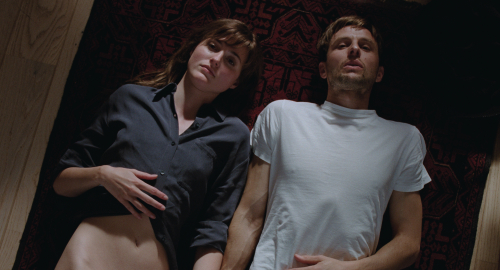
Kasper Tuxen/Neon
MOVIE REVIEW
The Worst Person in the World (2021)
The title “The Worst Person in the World” isn’t a reference to the film’s protagonist, but it very well could have been. We learn during the prologue that Julie (Renate Reinsve) hasn’t quite settled on what she wants in life and has switched her college major a couple of times. Though decidedly lacking in stick-to-itiveness, she plunges headlong into a committed relationship with Aksel (Anders Danielsen Lie) the moment he urges her to move on and find herself because of their 15-year age gap.
By chapter two, she crashes a party and spends the all-night bender with Eivind (Herbert Nordrum), a random stranger. Julie and Eivind initially opt to exercise self-restraint to stave off cheating on their respective significant others, but – as foreshadowed by her track record – this does not last. She leaves Aksel for Eivind in chapter five, with seven more chapters and an epilogue yet to go.
“What Do We See When We Look at the Sky?” employs a similar storybook structure, which relies on voiceover narration to do the heavy lifting. That same fairytale tenor manifests itself in “The Worst Person in the World,” with director-cowriter Joachim Trier managing to capture magic in the air using good ol’ fashioned slow motion and an extended scene in which everyone else freezes as if in a game of Red Light, Green Light as Julie sprints through the streets of Oslo. After this bit, it makes perfect sense that she would promptly dump Aksel in the next scene.
Aside from a relationship simply running its natural course and losing its spark, Mr. Trier contemplates the sway of external influences such as familial traumas, professional aspirations and the political climate. Chapters one and four cover Julie’s and Aksel’s toxic families, while chapters three and nine touch on #MeToo and cancel culture. The film never explicitly attributes Julie’s fraught relationship with her uninvolved father, Per Harald (Vidar Sandem), to her commitment phobia and apprehension toward parenthood, but one has to wonder whether their shared behavioral traits have more to do with nature or nurture. Mr. Trier is less persuasive articulating the toll of political correctness on a relationship, other than how it is weaponized for and against Julie’s and Aksel’s respective artistic expressions. The title apparently refers to Aksel for his problematic comic art, yet Mr. Trier wants us to believe Julie is the villain in their relationship.
“The Worst Person in the World” is a rare coming-of-age story with a flawed protagonist who makes mistakes and inflicts her growing pains on others. Julie finally matures when she has to face the consequences of her own actions and choices. Time is an enemy, but we are still our own worst enemy.
Comments